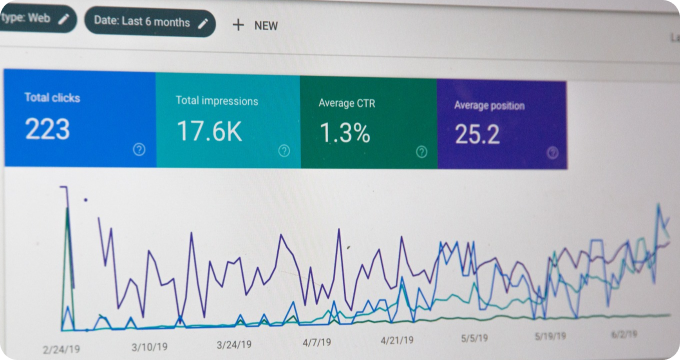6 Things I Wish I'd Known About Job Costing Software Before Implementing One
- December 08, 2023
- 3 minutes
In the pursuit of operational excellence and financial control, businesses invariably find themselves on the doorstep of job costing software. Once the threshold is crossed, there are myriad potential gains. However, traversing this path is not without challenges. Reflecting on the journey, I am tempted to retrospectively equip my past self with knowledge that would have made the process smoother. Here are my insights: six aspects about job costing software I wish I had been cognizant of before installing one.
Firstly, the understanding of the central concept, 'job costing', is crucial. In accounting parlance, it refers to the process of accumulating information about the costs associated with a specific production or service job. It allows companies to determine the exact expenses for materials, labor, and overheads involved in producing a product or service. The relevance here is the role of job costing in accurate pricing, profitability analysis, budget planning, and cost control.
Job costing software is the digital embodiment of this technique, but before you rush to implement one, bear in mind the complexity of the process. You should think about the Pareto principle, a concept from economics which states that for many outcomes roughly 80% of consequences come from 20% of the causes. One might think that implementing the software would handle 80% of the job costing process, but in reality, it’s the other way around. It's you who have to do the heavy lifting of inputting the right parameters, defining the appropriate cost centres, and creating the correct allocation bases. The software will only do the computational part, often representing the remaining 20%.
Secondly, consider the specific nature of your business. Software isn’t one-size-fits-all. It's more a tailored suit, cut and stitched according to your business model, industry, and scale of operations. The principle of comparative advantage, borrowed from international trade theory, posits that entities fare better when they focus on activities with which they have the relative upper hand. It suggests that your choice of software should align with your firm’s unique characteristics and requirements.
Thirdly, the journey doesn’t end with the software installation. It's a cyclic process of continuous learning and adjustments. Remember the Heisenberg Uncertainty Principle from physics, which states that the position and the velocity of an object cannot both be measured exactly, at the same time. Similarly, in the initial stages of implementation, you might not be able to perfectly balance the system's setup and its output. As you get more familiar with the software, it would be easier to find the sweet spot, but it takes time and patience.
Fourthly, training your team is as crucial as choosing the right software. The entire workforce should be at ease with the software since it's not just an accounting tool but a comprehensive planning and control system. Consider the Nash equilibrium, a theory from game theory, which suggests that in a system where everyone is trying to choose the best response to the others, the optimal outcome is one where no individual can unilaterally change their choice and get a better outcome. This means, unless everyone in your team is proficient with the software, you won't be able to achieve optimal results.
Fifthly, ongoing support and updates from the software provider matter. As your business evolves, your software should be capable of adapting to your changing needs. Here, the concept of sustainable competitive advantage comes into play, which states that long-term success comes from leveraging a company’s unique skills or assets in ways that competitors cannot easily replicate. Thus, choosing a software provider that offers robust support and regular updates can give you a competitive edge.
Finally, return on investment (ROI) is a critical factor. While the immediate benefits of job costing software may seem enticing, it's essential to ensure that the investment will yield adequate returns in the longer run. This is where the concept of discounted cash flows (DCF), a valuation method used extensively in corporate finance, comes into the picture. Use DCF analysis to compare the initial investment and ongoing costs against the projected benefits to ensure a positive net present value.
In conclusion, adopting job costing software is not a trivial task. It demands an understanding of certain underlying principles, a careful analysis of business-specific needs, continuous learning, thorough training for the team, reliable ongoing support, and a clear vision of expected returns. With these insights, you can turn this challenging task into an opportunity for growth and success.
Learn More
Unleash the potential of your business by diving deeper into our blog posts, where you can explore the transformative power of job costing software. For an unbiased, comprehensive view, they are encouraged to examine our meticulously curated rankings of the Best Job Costing Software.
Popular Posts
-
 Job Costing Software Industry Report: Unveiling Key Findings and Insights
Job Costing Software Industry Report: Unveiling Key Findings and Insights
-
 The Future of Job Costing Software: Predictions and Emerging Trends
The Future of Job Costing Software: Predictions and Emerging Trends
-
 6 Things I Wish I'd Known About Job Costing Software Before Implementing One
6 Things I Wish I'd Known About Job Costing Software Before Implementing One
-
 How to Hire the Right Job Costing Software for Your Business
How to Hire the Right Job Costing Software for Your Business
-
 Ask These Questions to a Job Costing Software Provider to Choose the Right One for Your Business
Ask These Questions to a Job Costing Software Provider to Choose the Right One for Your Business






